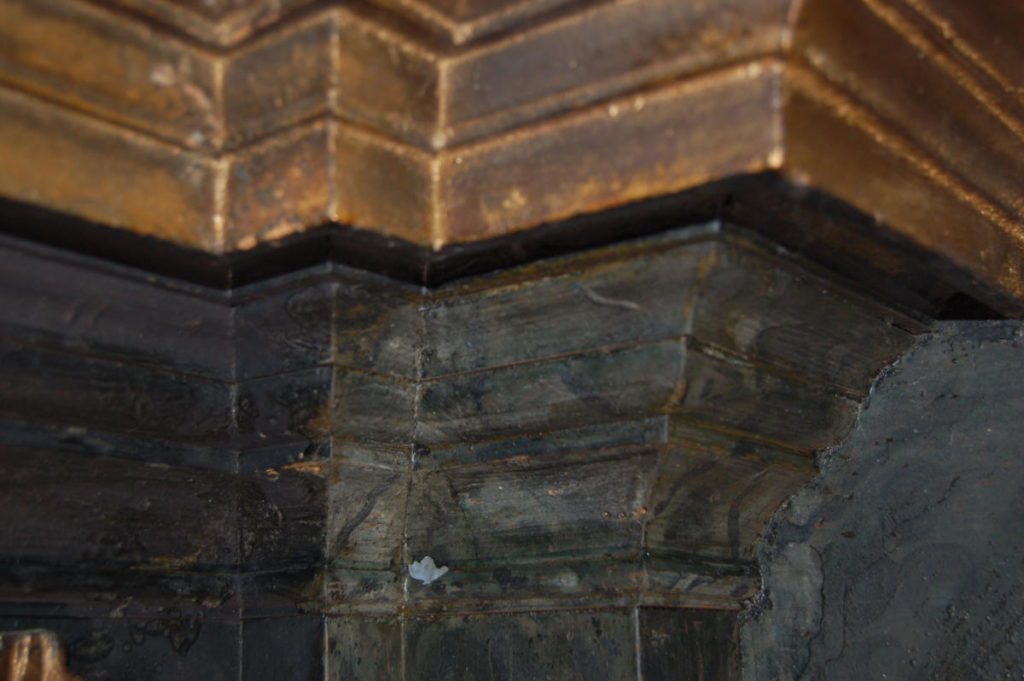
Church of the Mother of God the Queen of Poland in Jakubowice
RENOVATION OF THE MAIN (PULPIT) ALTAR FROM THE CHURCH OF THE MOTHER OF GOD THE QUEEN OF POLAND IN JAKUBOWICE
The main altar from the church of the Mother of God the Queen of Poland in Jakubowice was made in the 18th century in the baroque style as a pulpit altar. After the World War 2, the church was given to the Catholics which is probably when the pulpit was also removed. The renovation of the object was also done then, and it involved covering it in black and navy oil paint which caused degradation of the original polychromy to a large degree. Also then many elements were covered in schlagmetal which had a negative influence on the painting layer.



The altar was in a bad condition, damage included all technological layers. Many losses of polychromy and topical abrasions which reached wood were seen. In the structure of the reredos and on the columns signs of xylophages foraging were noticed. Microorganisms and fungi which covered the altar’s parts were evidence for bad conditions and microclimate in the church.
The aim of the renovation was to prevent the processes of destruction and restore the original colours and gilding of the altar.
The first stage was documentation of the current condition and completion of many uncoverings the aim of which was to establish the original colours and gilding. Parts of gilding did not correspond with each other, the original places covered with schlagmetal had been painted. Next, the unoriginal repainting were removed which was when red lead from the doors that apart for aesthetic reasons protected also the wood from external factors such as humidity, was discovered. During the ablation of unoriginal repainting darkened schlagmetal was removed. Some elements of the ornaments had degraded and were reconstructed during the renovation.



Wood was impregnated, missing elements filled, rotten elements were reinforced by impregnation, and the losses filled with sawdust with resin.
Next, test were conducted to apply varnishes which were to isolate polychromy, and gilding with the use of mixtion.
On the chambranles, putty was used only in the places of wood losses, they were not made in the layer of paint because it is applied directly on wood. Retouch was made in alkyd paints, unification of colours was achieved by the use of coloured glaze.
Losses of mortar in the panels were filled, and then the surface was processed by brushing the wet surface with sandpaper. Due to a bad condition of the original gilding, they were reconstructed with the use of 23 ¾ karat gold leaf. Recessed parts were glazed with shellac.
The retouch of losses in the painting layer were done with a means of stippling with acrylic and alkyd paints by applying many types of glaze. Retouched parts could be distinguished from the original because they were stippled with a dot (the chambranles) and line (flowers on the pedestal). This action was to unify the colours and the form of the object. Veins were highlighted with retouch varnish which accentuated their colour.






